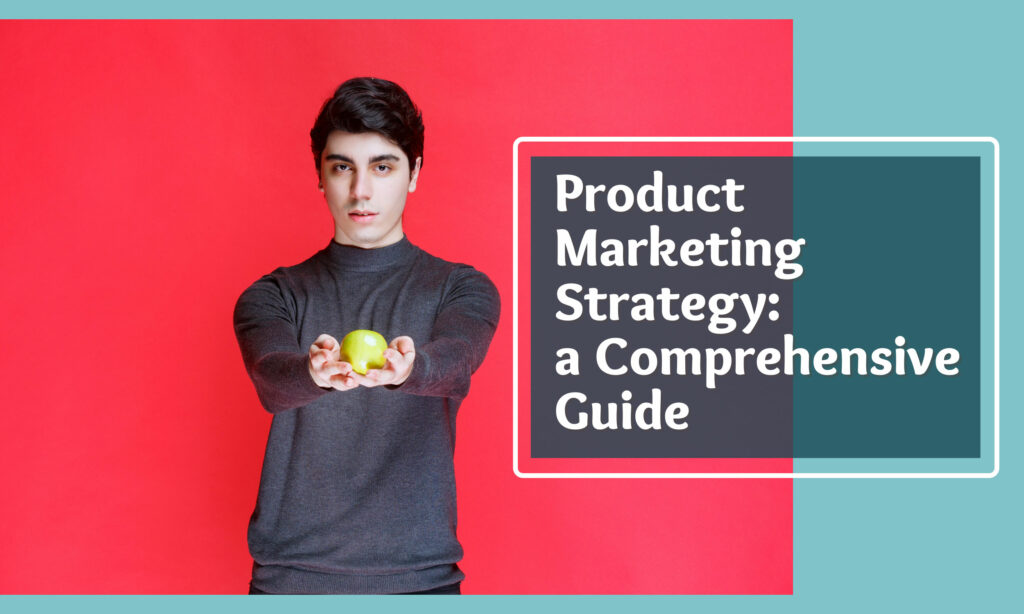While product marketing is a prominent department in most companies, you can hardly find a good definition anywhere. One of the reasons that a good description for product marketing is hard to come by is because it exists at the intersection of product, marketing, and sales.
But in short, product marketing is a strategic function, bridging the gap between product management and marketing.
Let's expand on this a little bit.
What you will find in this article:
- What exactly is product marketing anyway?
- Why is product marketing so important?
- How to start product marketing? 6 steps of product marketing
- What are product marketing strategies?
- What are product marketing techniques & tactics?
- Product sampling as a part of product marketing strategy
- How to measure the impact of product marketing strategy?
- Key Takeaways
What exactly is product marketing anyway?
If you Google "what is product marketing", Google will tell you: "it's the process of bringing a product to market," which is a true definition of the phrase, but not an inclusive one, Because it advocates for a simple and one-dimensional definition of product going TO the market, while Product marketing also affects the creation of the product by taking insights FROM the market back to the team.
In fact, the product marketing process breaks into two separate parts: "before" and "after" a product launch.
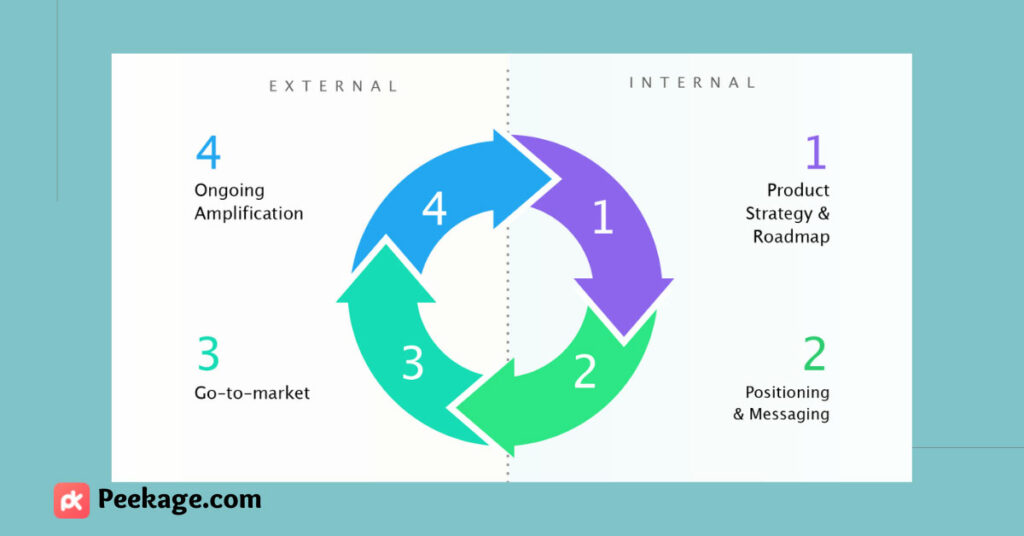
Therefore, a more comprehensive definition of Product Marketing is:
Product Marketing is what connects the dots between the product and the market in both directions.
This means that the Product Marketing role is responsible for two separate flows:
- Shaping the product by understanding the market needs and demands.
- Communicating the product to the market.
In shaping the product, you research your customers and competitors, develop personas and market segmentation, and update pricing to better match the value between market and product.
In communicating the product, you promote it to raise awareness, create content, and manage your team in coordination with the delivery process.
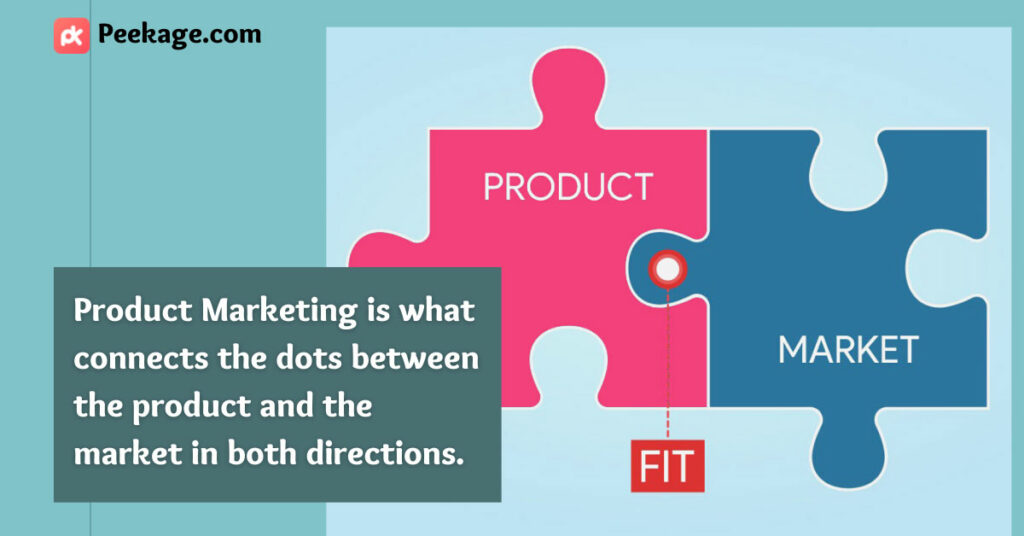
So, to summarize it all once again, and put it in layman's terms:
Product Marketing encompasses everything that concerns how a product is positioned, promoted, reshaped, and sold.

Why is product marketing so important?
Building the right product for the market is one of the most important stages of growth. Product marketing helps you to identify the right product and put it in the right consumer's hands, which ultimately drives up your sales and profits.
It plays a vital role in the expansion of your business, especially when it comes to defining a go-to-market strategy and achieving a product-market-fit status.
Related: Experiential Marketing: Taking Your Business to the Next Level
Essentially, Product marketing is your key to success in today's competitive market.
Product marketing enables you to:
- Gain detailed and analyzed information about your (potential) customers
- Know which products will meet your customers' needs before product launch
- Know your competitors beforehand
- Set the right price for your product
- Create a go-to-market strategy
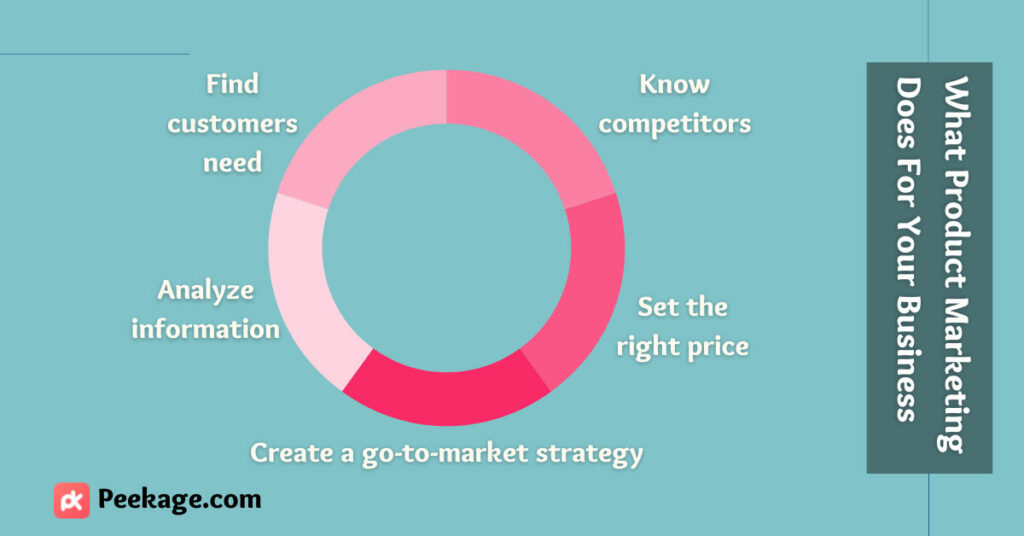
How to start product marketing? 6 steps of product marketing
Step 1: Know your customers
The process of product marketing starts with knowing your consumers on a personal level.
Who are these people? What do they want? How do they want it? Answering these questions will help you to understand them better, build strong personas, and find your user pain points.
Step 2: Market research
Competitive analysis is an easy and foolproof way to know what you are up against.
Who are your competitors? What are they selling? Are people happy with them? Is there room for improvement? Answering these questions will help you to know similar products in the market space and their unique positioning, and the nature of companies that make these products.
Step 3: Shape product positioning and messaging
Use the information you gained in step 1 and step 2 and contextualize it into an innovative and meaningful product messaging that resonates with your consumers, as well as your own team.
Meanwhile, Product positioning helps you to differentiate yourself from your competitors and appeal to different personas.
Related: 3 Ways Direct to Consumer Brands Get New Consumers
Step 4: Create a go-to-market strategy
Use steps 1 to 3 and devise a strategic plan that effectively brings your product to the masses. A product marketing go-to-market strategy defines the channels, audiences, and other components that traditional marketing teams need to assist with.
In creating a go-to-market strategy, you identify which personas you will target in each campaign and how; you will also set critical goals such as engagement and adaption to measure results later.
A go-to-market strategy may have one or multiple built-in campaigns for each persona.
Step 5: Brief sales and marketing
After concocting a go-to-market strategy, it is time to bring everyone in. This means all sales and marketing team members must be familiarized with your plan and form a unified front.
You must also make sure that your marketing and sales leaders have all the necessary resources to do their job; this means providing funds and resources for content creation, advertisement, product sampling, or any other channel suggested by your go-to-market strategy in step 4.
Step 6: Launch your product and monitor results.
Depending on your product and the feedback you receive from your consumers, your lead sales and marketing personnel will know when to stick to the current product and when to pivot in order to maximize launch effectiveness.
Performance monitoring is also crucial for tracking consumer response to the product, ensuring that you target the right audiences with the best possible messaging.
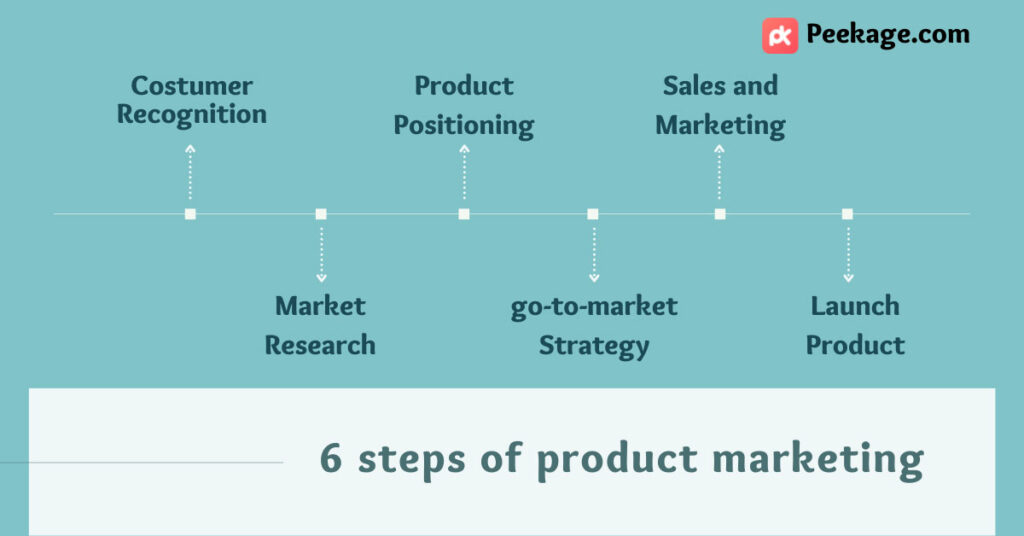
Following these six steps will navigate you through the product marketing process from start to finish.
However, the Product marketing process can be a handful; it contains so much detail, requires your constant attention, and it is hard to manage your resources through it.
Luckily, there are companies and services available for you to outsource this process thoroughly and achieve the same results.
What are product marketing strategies?
All product marketing strategies begin with answering these four questions:
What are you selling?
People don't like to buy things; they want to solve their problems.
Regardless of the type of product you sell, your marketing should make it abundantly clear why customers' lives will be better after buying it.
Who do you want to sell to?
You know what you want to sell; now you should get to know whom you want to sell it to. Create detailed outlines of your ideal customers, and form buyer personas.
How do you want to reach your consumers?
Once you know who you want to reach, you should decide how you want to reach them.
There are dozens of marketing channels available that you can choose from. Online channels have proven to be useful even for physical products during the Covid-19 Pandemic.
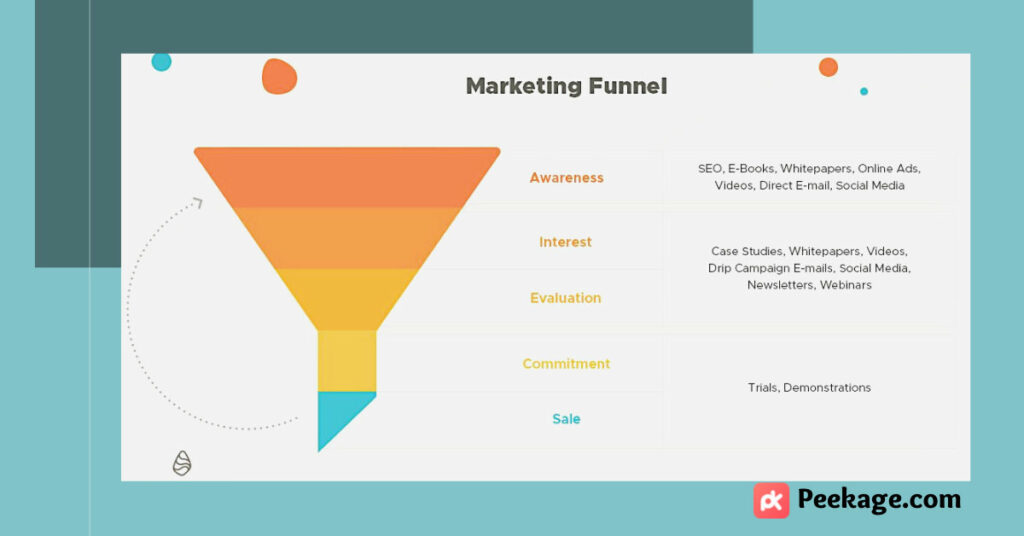
Some online channels that have proven effective include Paid search and social, email marketing, and digital product sampling.
How much does your product cost?
This last question deals with your product pricing. Your product should be affordable for your targeted consumers. But only you can determine to what extent pricing features are in your marketing strategy.
Your perfect price point is a balance between what your consumer is willing to pay, how much your competitors charge for similar products, and how much you want to charge your consumers.
Seven P's of product marketing
But to be more specific, there exists a product marketing road map with a set of core principles, known as the "seven P's" of product marketing:
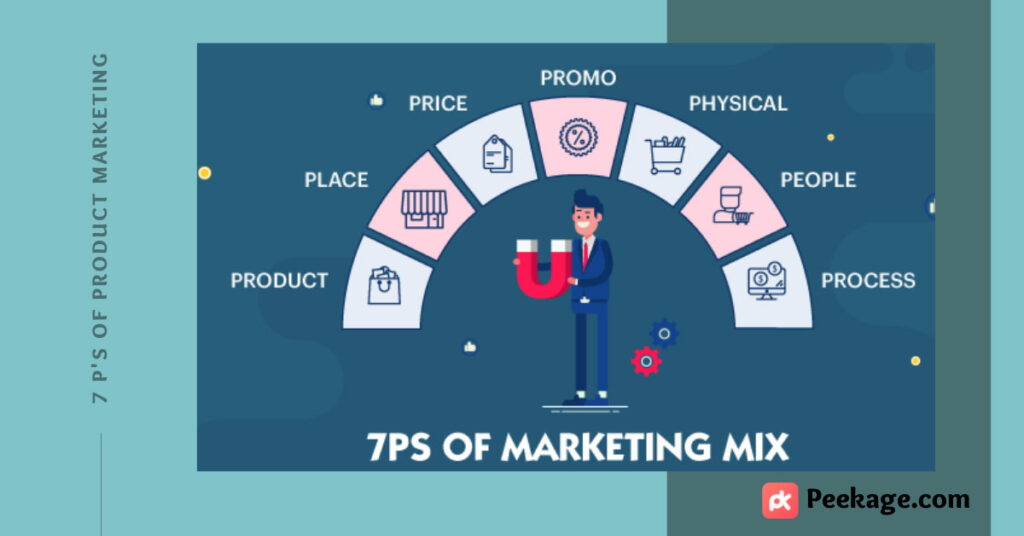
Product
Depending on what type of company you have and what sort of product you sell, not every one of the 7 P's will apply to you.
Your product positioning and messaging strategy are primarily based on the type of your product, your competitors, and your consumer personas.
Pricing
Pricing strategy is one of the most important P's. Picking the perfect price point depends on overall marketplace conditions, the ability and willingness of consumers to pay, and your competitors' prices.
Place
Once again, depending on what type of company you are and your product, the place strategy may mean wildly different things to you.
While it may refer to product distribution places for some companies, for some shops and services, especially during a pandemic, online distribution is the key to success.
If you have a physical product to sell, there are three primary types of distribution that you should be familiar with in your place strategy:
Exclusive distribution (sell only in some small number of outlets), Selective distribution (sell only in relevant outlets or settings), and Intensive distribution (sell virtually everywhere).
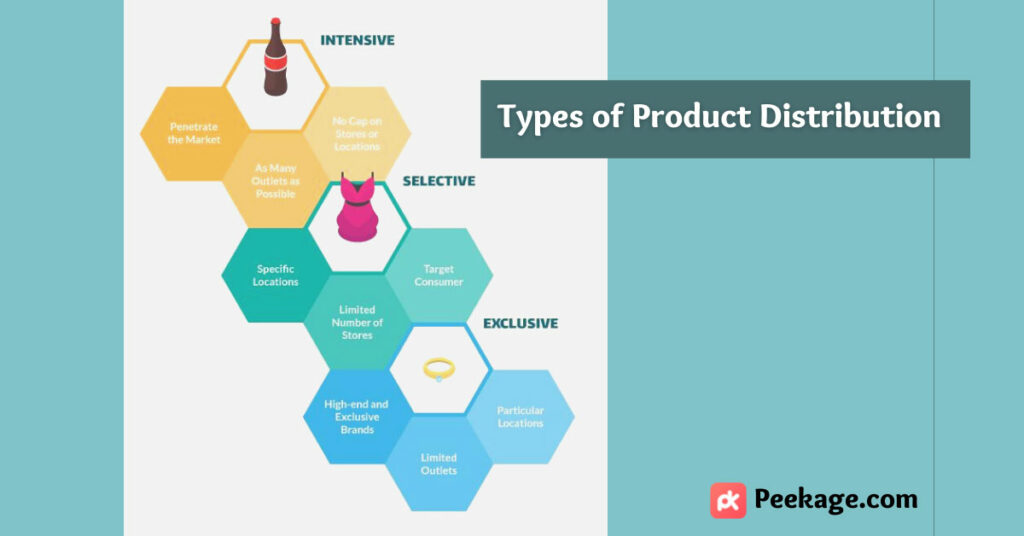
Intensive distribution often maximizes the reach, but targeting users with this type of distribution is very hard. Although using an online intensive distribution system, you can get the best of both types and reach wider but more relevant and targeted consumers.
Promotion
Promotion is by far the most important of all P's. Promotion refers to almost every aspect of how a product is presented to its target market, including brand awareness.
But more importantly, it settles the question of WHERE for advertisement. Your promotion strategy defines your channels of advertising.
You will decide HOW you want to reach your target market. You may use billboards, hold events, sell your product door to door, set up a counter in a mall, or offer product sampling. Nevertheless, this is the stage that defines your channel of promotion.
Related: The Ins and Outs Of Product Sampling Marketing: The Ultimate Guide To Enhancing Your Brand
Process
There are no two product marketers in the world that operate exactly alike. While earlier we introduced the six steps of product marketing, every company and product marketer navigates the process slightly differently.
Modification of the process for optimization based on your product and company vision can be tremendously helpful. In a product marketing campaign, the process is subcategorized into two main parts: strategy and execution.
People
Your people strategy refers to how you handle your managers and employees that make the product you want to sell.
How many people do you need to get the job done? Do you have the means to hire experienced professionals to handle tasks associated with a product launch? Or do you prefer a smaller and more agile group?
Physical environment
The physical environment is about the experience that the consumer has while shopping for your products and the perceptions of your brand as they relate to the physical environment of the store or retail space.
In online shops, the quality of the website and package delivery experience act as physical environments.Â

Tricks of the trade: product marketing techniques and tactics
Successful product marketers may have some tricks hidden up their sleeves. There are some product marketing techniques and tactics that have stood the test of time.
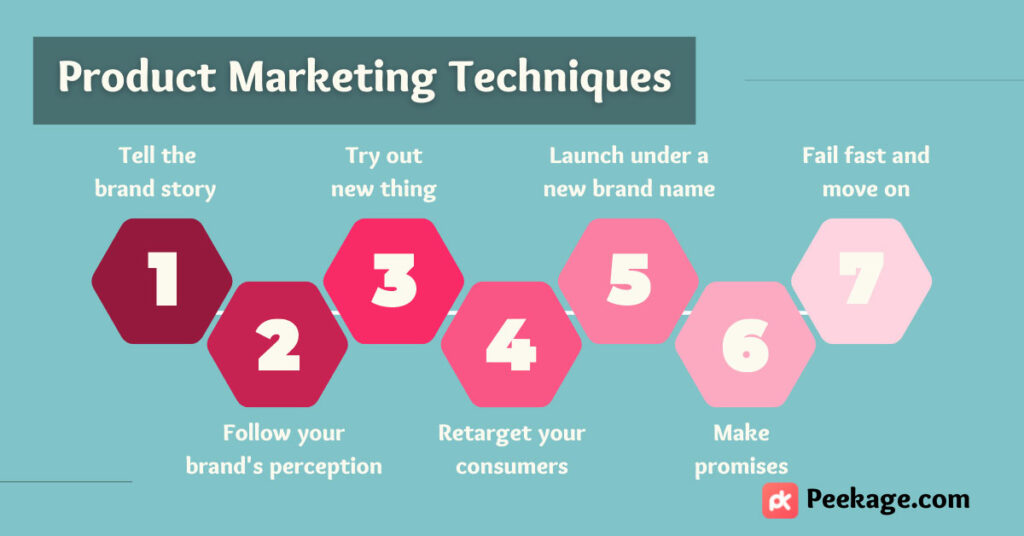
Tell a true story about your brand/product
Telling a story - a true one - helps you to connect to your consumers on a more personal level. By leveraging your genuine feelings and emotions, you appeal to your consumer's unconscious mind.
When your consumers understand WHY you sell what you sell, they are more likely to buy it and stay loyal to your brand.
There are many examples of this tactic in work. Take Apple's product marketing strategy, for example.
Steve Jobs told the world that he designed a phone with no buttons because he wanted to think differently, he revolutionized the industry, and to this day, people buy iPhones and iPads because they subscribe to the theory of thinking differently. They are buying Apple's cause, not apple products.
Don't work against your brand's reputation/perception
Some product marketing campaigns fail due to brands going too far outside their market perception. While expansion may be good, many people do not like having their dog food and their own food under the same brand name.
Also, being creative in product marketing has its limits too. If you are selling a shampoo that looks like a soda can, it may not sit well with your consumers.
Do what your competitor is not willing to do
Try new things that your competitors are not willing to try. This may be a new method of marketing, launching a new product, or any number of items. If you keep playing it safe and never try new things, you will keep losing your market shares to companies who take risks.
Retarget your existing consumers
To drive up your sales, you don't necessarily have to find brand new buyers. Sometimes a new and relevant product can bring back your old consumers to shop. Sometimes even a new method of marketing may help you drive up sales of your current products.
Launch your new product under a new brand name
If you plan to launch a product that is not aligned with your brand perception, create an entirely new brand.
You may lose your built-in name recognition, but you will overcome the barrier that causes your base market to think you can not make a different product with good quality under the same roof.
Make promises that you can deliver on
Studies show that making big promises sits well with many consumers, but only when they are delivered. Nowadays, users read reviews on Amazon and Reddit to see how your product actually works.
Did your shampoo really reduce the number of split-ends by half? Did you plant a tree for every pair of shoes you sold? You may live with a lie but until the market figures it out.
Fail fast and get on with your life
If you are trying to find a market for a product you have already built, your product failure rate is always high.
Believing in your product is necessary, but only if you check market needs before building it; if you find yourself with a product that is not performing well in markets, either pivot your product according to market needs or fail fast and move on with your life.
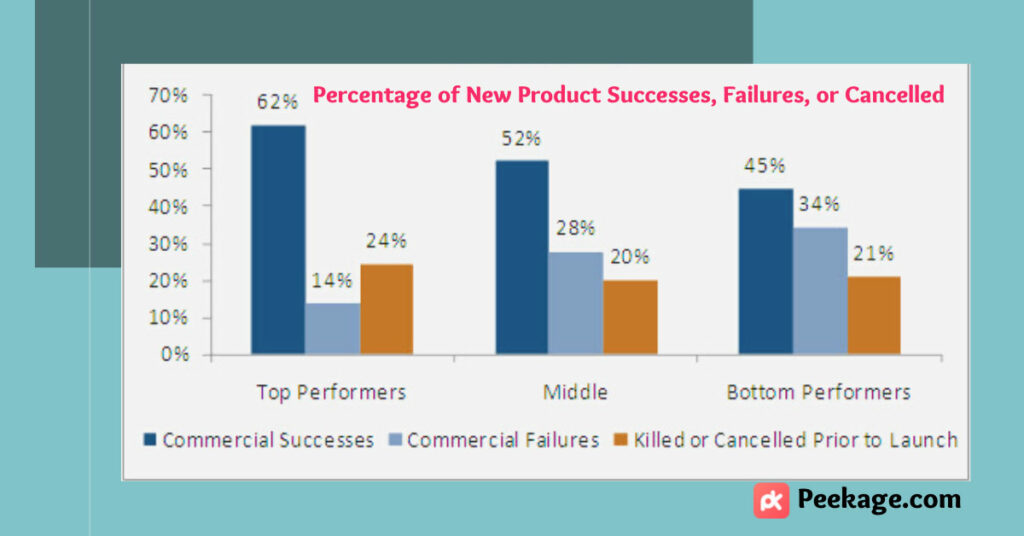
Product sampling as a part of product marketing strategy
Product sampling is a simple yet highly profitable process for brands in which potential consumers get a chance to try out new or upcoming products and provide feedback.
Product sampling is a form of promotion strategy in product marketing.
A good marketing team knows the importance of effective campaign management, consistent creative operations, and powerful logistics - and Peekage can be your partner in your product marketing journey.
The Peekage platform makes it easy to plan and manage a product sampling campaign, get reports, and comprehensive analysis on key metrics and have real-time updates on package deliveries.
With Peekage, you gain access to its AI-powered dashboard that enables you to pick your right consumers, see live user feedback, and form a genuine and personal connection with your target customers.
Related: 30 Ways to Actually Increase Sales Online - Proven Methods
Here is how it works:
- Companies give Peekage their customer persona (or Peekage experts help them create their personas)
- Peekage then sends samples to users on their database whose description matches the persona.
- Consumers test the product, reflect on it, and only then answer the survey questionnaire provided by the brand about their experience.
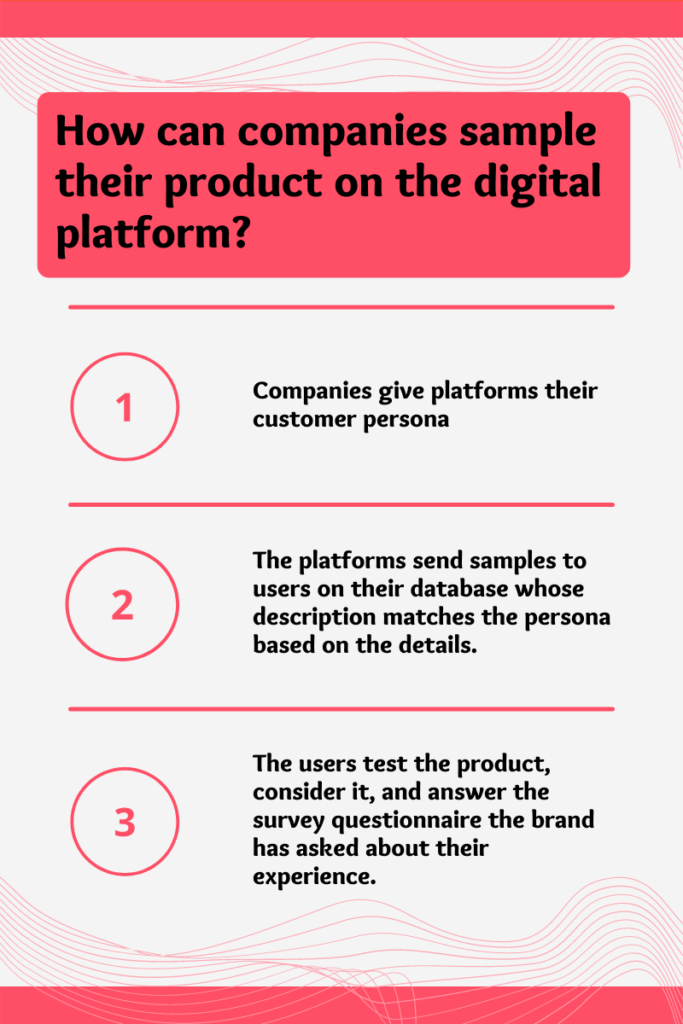
How to measure the impact of product marketing strategy?
Every campaign should be measured, and product marketing campaigns are no exception. Here are some key product marketing metrics that you can use to measure the success of your campaign:
Overall revenue goal
The ultimate goal of most companies is to boost sales. Therefore, pretty much every marketing team will have revenue among their metrics.
Win rates
Sales success as measured by win rates is a crucial contributor to the company's ability to hit revenue goals and can more closely reflect product marketing's efforts. Measuring overall win rates and slicing this data by the sales team, product, and competitor, can uncover strengths and opportunities and more closely direct and recognize the effort of the product marketing team.
Product launch metrics
Usually, go-to-market strategy metrics during product launches include new consumer numbers, content views, etc.
Product usage
Product usage is another metric that can lead to overall revenue. Metrics like cross-sell numbers or upsell numbers are among product usage metrics.
Customer happiness and retention
Similar to product usage, customer happiness metrics can correlate with other key revenue metrics and be a relevant product marketing goal. Retention rates are an even more direct metric to align customer happiness with revenue goals.
Qualitative feedback
Quantitative KPIs don't tell the whole story, so most teams will leverage qualitative feedback as well.
Key Takeaways
- There are many product marketing definitions available; all of them are trying to illustrate the relationship between product, sales, and marketing.
- Product marketing is a process, you continuously gather user feedback and reshape your product.
- There are several product marketing strategies available, yet online strategies such as online product sampling and paid search are performing well, especially during the pandemic.
- All successful product sampling strategies examples include brands that connect to their consumer base on an emotional level.
- Your product marketing roadmap is unique and depends on your definition of 7 P's.
- A successful product marketing go-to-market strategy begins with knowing your consumers on a deep and personal level.
- A good product marketing technique is to tell a personal story because it helps you differentiate yourself from your competitors.
